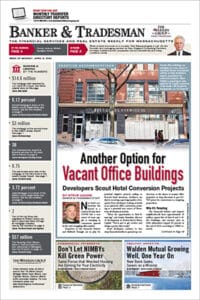The state of the Cape Cod housing market poses an important question to Massachusetts’ housing policy community: Will the speed of home sale transactions stay the same, post-COVID?
As Scott Van Voorhis details in this week’s column, the same trends bedeviling the entire Massachusetts market are amplified on the peninsula. From having around 1,700 single-family homes on the market in a pre-pandemic February, the region had 343 this February, with little indication that number would rebound to something more normal as spring unfolded.
A substantial part of this shortage is due to a lack of sellers willing to list their homes. Many are flat-out afraid they won’t be able to find a new home once their current residence gets snapped up.
An equally big contributing factor: Low mortgage interest rates, which after jumping up above 3 percent last month amid Wall Street inflation fears could be stabilizing just shy of 3.2 percent on a 30-year, fixed-rate loan, according to Freddie Mac. This is still short of pre-pandemic levels – already rock-bottom by historical standards – and despite record price run-ups statewide they still give most buyers plenty of reason to jump into the market and plenty of firepower to win bidding wars.
But both these factors should prove transitory. Despite last week’s disappointing news about production hiccups for the Johnson & Johnson shot, plenty of COVID-19 vaccines are continuing to land in Bay Staters’ arms. And interest rates are likely to stay at current levels or even increase modestly as federal stimulus spending flows into the economy.
What’s more uncertain is how fast home sales will move once the pandemic is over. Statewide, single-family homes are spending a median of 36 days on market through February this year; last fall that number had even dipped below one month.
Agents across the state say buyer habits have changed, with many more choosing to do the “window-shopping” phase of their search online on their own. Thanks to the real estate industry’s rapid embrace of affordable 3D home tours and other listing enhancements, a not-insignificant number of buyers are even willing to purchase a house without ever setting foot inside, new research from Zillow and others has found.
Some of this may likely be generational. Millennials, now in their prime homebuying years, have grown up shopping online in a data-driven world and the real estate industry has finally caught up with them. They now arrive at their real estate agent’s proverbial door armed with a far more certain idea of what they want in a house and where they want to live, meaning they can transact much faster, helping prevent the kind of inventory build-up that gives buyers leverage over sellers.
The coming year will help sort out which of these factors is strongest, and all three bear watching.
Letters to the editor of 300 words or less may be submitted via email at editorial@thewarrengroup.com with the subject line “Letter to the Editor,” or mailed to the offices of The Warren Group. Submission is not a guarantee of publication.






